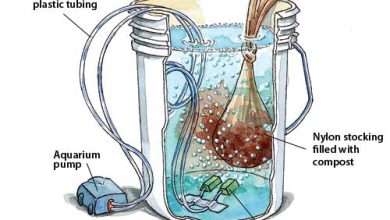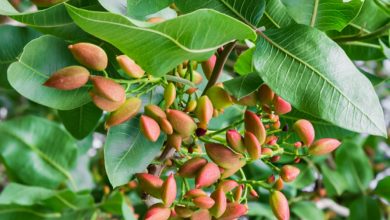Potato Beetle: [Characteristics, Detection, Effects and Treatment]
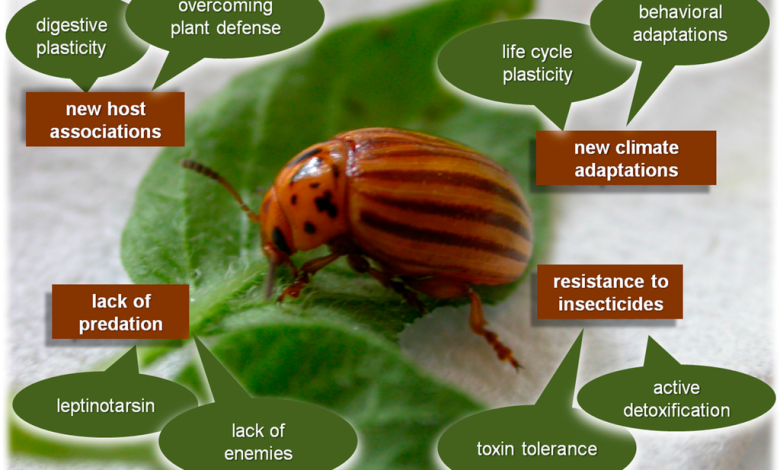
What is potato beetle?
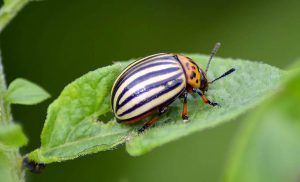 One of the most voracious beetles is the potato beetle, with the scientific name Leptinotarsa decemlineata and belonging to the Chrysomelidae family.
One of the most voracious beetles is the potato beetle, with the scientific name Leptinotarsa decemlineata and belonging to the Chrysomelidae family.
It is a species that has managed to conquer practically the entire world thanks to its aggressive behavior, which makes it a very dangerous pest for one of the most consumed tubers worldwide: the potato, both in the field and in storage.
It is believed that its origin or origin is focused between Colorado, in the United States and Mexico, even though the origin of the cultivation of potatoes and potatoes is located in Upper Peru.This follows from the observations made in 1824 by Mr. Thomas Say, who described them very well after collecting plants in the Rocky Mountains.
It managed to expand to Europe when the North American troops, during World War II, established their strategic bases in Bordeaux, in the southwest of France, managing to jump to Spain, Holland and Belgium, despite the fact that it had already been exterminated in Germany long before, in the year 1877.
But as potato cultivation grew globally, the mobility of this clever beetle did too, to the point where it now constitutes one of the most serious threats to this cultivar.
How can we identify it?
It is not impossible to detect the presence of potato beetle in a cultivar. Quite the contrary. They leave many clues that can lead us to discover them in time, it just takes a lot of patience and a great capacity for observation.
Among the most outstanding characteristics of these beetles we have the following:
- The eggs carried by the females, about 800 throughout the life of each pregnant specimen, are yellow to orange, about 1.5 mm long.
- They can be easily seen on the underside of the leaves, because they are deposited in clusters of about 30 eggs, which take about 4-15 days to burst for the larvae to appear.
- The larvae have a reddish coloration and the back is swollen, marked with two brown dotted lines on the sides. They have a development divided into four stages, period in which they reach from 1.5 to 8 mm long.
- The pupae will come after going through a period called prepupal where they do not feed. The prepupae fall to the ground and depending on the prevailing environmental temperature, it will take a few weeks for young adult specimens to appear, although sometimes they delay their appearance on the scene until the arrival of spring, when they resume the process of food dependence on the host plants. that they will occupy for up to three generations, and more, as long as they achieve an ideal environment, only in one season.
- Adults have a distinctive feature: they measure about 10 mm and their body is crossed by 10 longitudinal black bands on a yellow background. In winter they remain immobile buried in the ground, but in spring they will have a great reproductive and feeding activity.
intruder detection
- In the leaves, the females always tend to place their eggs on the underside, in yellowish clusters.
- The larvae can also be identified because more and more leaves will be bitten, from the tip towards the vein.
- They leave gray droppings on and under the leaves.
- If the unwanted visit becomes a pest, they will surely leave only the stem of the plant.
What plants does potato beetle affect?
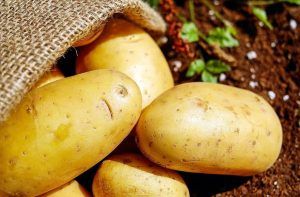 The potato beetle is not only capable of damaging this tuber by behaving like a ferocious pest, it is also an assiduous destroyer of the so-called Solanum genus, which is why it also attacks cultivars of aubergines, tomatoes, as well as cabbages, turnips, cauliflowers.
The potato beetle is not only capable of damaging this tuber by behaving like a ferocious pest, it is also an assiduous destroyer of the so-called Solanum genus, which is why it also attacks cultivars of aubergines, tomatoes, as well as cabbages, turnips, cauliflowers.
Larvae and adult beetles act with great appetite when invading the leaves, to the point that they are capable of completely eating the plant, without any exaggeration.
They are beetles with a great reproductive capacity, since on a single plant they can lay about 2,000 eggs, they are very fertile and that makes them resistant, although their natural enemies help reduce the attacking population. Such is the case of some pathogenic fungi.
How to fight potato beetle?
The best way to act against these prolific leaf eaters is by adopting preventive measures in cultivars of the Solanum genus in general, not just potatoes, to prevent irrecoverable economic losses. Let’s see.
Crop rotation
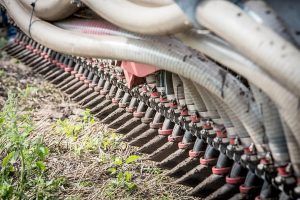 One of the most sensible recommendations from experts is to rotate the planting of potato crops and other species affected by this pest, especially if there has already been a previous attack.
One of the most sensible recommendations from experts is to rotate the planting of potato crops and other species affected by this pest, especially if there has already been a previous attack.
Certainly, some specimens that remain dormant during the winter will resume their aggressive activity in the spring, only to kill off the new crop.
Biologic control
The use of biological control methods is very favorable, rather than the use of chemicals in the affected cultivar.
Nothing better than the action of the best predator of the potato beetle: the pathogenic fungus Beauveria bassiana, easily accessible in commercial presentations that can be purchased with confidence.
Removal of adults and eggs
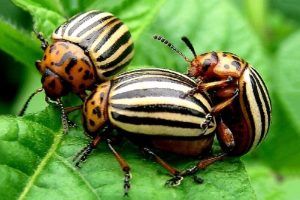 Periodic inspections of plants and potatoes in storage are essential to warn in time of the attack of some adults that will soon mate to reproduce and feed at the expense of our crops.
Periodic inspections of plants and potatoes in storage are essential to warn in time of the attack of some adults that will soon mate to reproduce and feed at the expense of our crops.
The important thing is to constantly monitor the evolution of plant growth, checking, leaf by leaf. If we manage to remove the first invasive adults and then introduce some natural predator, we will have won a great battle.
Likewise, it is necessary to destroy easily detectable eggs with an exhaustive review of the underside of the leaves, always preventing them from falling to the ground.
What are the best products to eliminate the potato beetle?
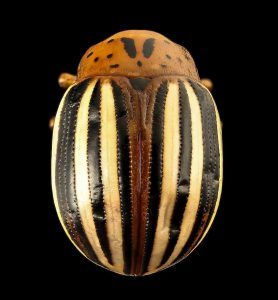 In extensive agriculture crops, the control and total extermination of this pest that is so dangerous for the healthy life of plants is very important.
In extensive agriculture crops, the control and total extermination of this pest that is so dangerous for the healthy life of plants is very important.
Undoubtedly, insecticides are the most widely used control method in commercial plantations, although it should be noted that not all of them report guaranteed results because potato beetles have acquired resistance to some toxins and, therefore, will not die as quickly as possible. needed.
Thus, it is necessary to be very attentive to the so-called criticality period of the plague, which runs moments before and after flowering, because the lack of leaf surface will end up greatly affecting the harvest.
The most effective treatments involve tests where it is determined that there are more than three specimens of these beetles, in sampling tests of 15 plants for each hectare of planted land.
Currently, the most effective products against the potato beetle, in any of its evolutionary stages, are: azinphos-methyl or cypermethrin and phosmet.The application must be repeated every 10 to 15 days, as soon as the first larvae and adults are discovered.

![Photo of Prune Begonia: [Importance, Time, Tools, Considerations and Steps]](https://www.complete-gardening.com/wp-content/uploads/2022/08/prune-begonia-importance-time-tools-considerations-and-steps-390x220.jpg)
![Photo of Chili Peppers in the Garden: [Cultivation, Care, Substrate, Irrigation]](https://www.complete-gardening.com/wp-content/uploads/2022/08/chili-peppers-in-the-garden-cultivation-care-substrate-irrigation-390x220.jpg)
